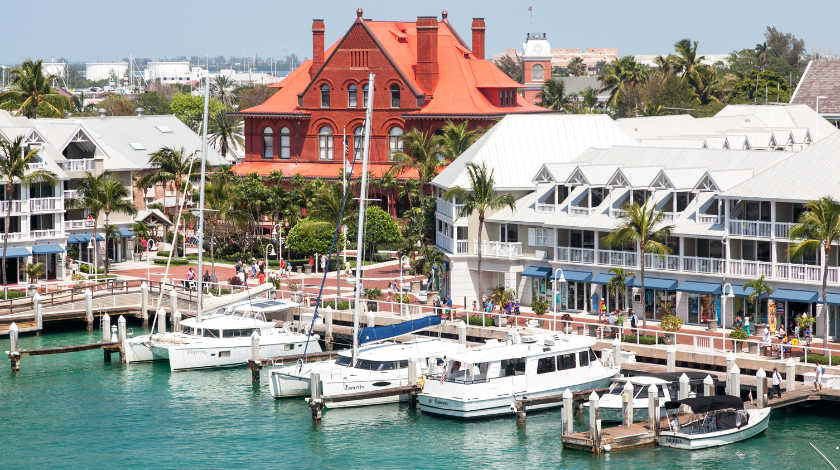Cargo Liquefaction: A Hidden Danger

This post was originally published on Virtue Marine’s website: https://www.virtuemarine.nl/post/cargo-liquefaction-a-hidden-danger
In the present article we are discussing the risks of cargo liquefaction in bulk carriers, the importance of marine surveys and compliance with safety regulations, and the impact of cargo moisture content on liquefaction risk.
Introduction to Cargo Liquefaction
Cargo liquefaction poses a significant risk to bulk carriers by reducing vessel stability and potentially leading to capsizing. This phenomenon occurs when certain bulk cargoes transition from a solid to a liquid state, compromising the structural integrity of the ship. For example, materials like iron ore fines and nickel ore are known to liquefy under specific conditions, highlighting the dangers associated with transporting such cargoes [5]. Ship operators and marine surveyors must be well-versed in the risks of cargo liquefaction to ensure the safe transport of goods across oceans.
Awareness of cargo liquefaction risks is crucial for all stakeholders involved in maritime operations. By understanding the factors that contribute to liquefaction, such as moisture content and cargo characteristics, preventive measures can be implemented to minimize the likelihood of accidents at sea. For instance, the updated guidelines by DNV GL emphasize the importance of raising awareness and taking mitigating actions to address liquefaction risks in vessels carrying bulk cargoes. This proactive approach is essential for maintaining the safety of both crew members and the cargo being transported.
Cargo liquefaction can have devastating consequences, as demonstrated by incidents like the Bulk Jupiter sinking in 2015 off the coast of Vietnam. The vessel’s tragic fate was attributed to cargo liquefaction due to high moisture content in bauxite, resulting in the loss of lives and the ship. This case underscores the critical need for better risk management practices and adherence to safety protocols to prevent similar incidents in the future. The ability to recognize the signs of cargo liquefaction and take appropriate measures is paramount in ensuring the safety of bulk carriers and their crew members.
The Risk of Cargo Liquefaction
Cargo liquefaction incidents have led to multiple ship sinkings, emphasizing the need for better risk management in the shipping industry. For example, the sinking of the Bulk Jupiter highlighted the severe consequences of cargo liquefaction due to high moisture content in bauxite, illustrating the dangers associated with transporting bulk cargoes prone to liquefaction. Grounding, a common cause of bulker losses, underscores the importance of implementing improved safety measures to prevent accidents related to cargo instability. By understanding the specific risks associated with different bulk cargoes, such as nickel ore, ship operators can tailor their safety protocols to mitigate the dangers of liquefaction effectively.
The prevalence of cargo liquefaction incidents, particularly in Group A materials like nickel ore, underscores the significant risks faced by bulk carriers. These high-risk materials have been responsible for casualties and fatalities in the maritime industry, highlighting the urgent need for enhanced safety measures. The International Maritime Solid Bulk Cargoes Code categorizes cargoes based on their characteristics to manage the risk of liquefaction, with Group A materials requiring strict handling and monitoring procedures. By adhering to these classifications and implementing preventive strategies, the industry can reduce the likelihood of accidents related to cargo liquefaction and protect both lives and assets at sea.
Importance of Marine Surveys in Preventing Liquefaction
Marine surveys play a critical role in identifying potential liquefaction risks by assessing cargo conditions and compliance with safety regulations. For instance, surveyors analyze the moisture content of bulk cargoes like iron ore fines or bauxite to determine the likelihood of liquefaction incidents. By conducting thorough inspections and providing detailed reports, surveyors offer valuable insights into cargo handling procedures and compliance with industry guidelines to mitigate the risks of cargo liquefaction. This proactive approach enables ship operators to make informed decisions and take necessary precautions to prevent accidents during transit.
Incorporating marine surveys into regular operational practices is essential for maintaining the safety of bulk carriers and their crew members. By ensuring that cargoes are properly inspected and monitored for signs of liquefaction, potential risks can be identified and addressed before they escalate. The documentation and reporting generated by marine surveys serve as crucial tools for ship operators in making informed decisions about cargo stowage and handling procedures. By following the recommendations provided by surveyors and adhering to industry guidelines, the maritime industry can enhance safety protocols and minimize the risks associated with cargo liquefaction incidents.
Safety Measures and Regulations for Cargo Liquefaction
The International Maritime Solid Bulk Cargoes Code classifies cargoes into different groups based on their characteristics to manage the risk of liquefaction. Safety measures for shipping cargo prone to liquefaction involve proper cargo handling, monitoring moisture levels, and compliance with industry guidelines [5]. For example, the guidelines aim to ensure that vessels carrying bulk cargoes prone to liquefaction adhere to strict safety protocols to prevent accidents related to cargo instability. By following these regulations, ship operators can create a safer environment for both crew members and the cargo being transported.
Regular training and awareness programs on cargo liquefaction risks are essential for crew members and operators to enhance safety protocols. By educating personnel about the dangers of transporting liquefiable cargoes and the preventive measures to be taken, the industry can reduce the likelihood of accidents at sea. Crew members need to be well-versed in handling procedures and safety guidelines to respond effectively to potential liquefaction incidents. By implementing comprehensive training programs and fostering a culture of safety, shipping companies can significantly minimize the risks associated with cargo liquefaction and ensure the well-being of their workforce.
Impact of Cargo Moisture Content on Liquefaction Risk
Excessive moisture content in bulk cargoes can lead to cargo shifting and potentially capsizing the ship, emphasizing the need for strict moisture control measures. For example, cargo liquefaction incidents have been linked to high moisture content in cargoes like iron ore and bauxite, necessitating thorough testing and monitoring protocols. Proper testing procedures and certification of cargoes for liquefaction potential are crucial in preventing incidents related to cargo moisture content. By following stringent testing protocols and monitoring moisture levels, ship operators can mitigate the risks associated with cargo liquefaction and ensure the safe transportation of goods.
The moisture content of bulk cargoes plays a critical role in determining the risk of liquefaction during transport. For instance, cargoes like iron ore and bauxite, when exposed to high moisture levels, can undergo liquefaction, posing serious threats to vessel stability. To prevent accidents related to cargo moisture content, strict control measures must be in place. Thorough testing procedures and certification processes are essential to verify that bulk cargoes remain within safe moisture limits throughout the voyage. By adhering to these protocols, ship operators can effectively manage the risks associated with high moisture content in cargoes and uphold safety standards in the maritime industry.
Common Bulk Cargoes Prone to Liquefaction
Iron ore fines, nickel ore, and mineral concentrates are common bulk cargoes that have been known to liquefy, posing risks to ship stability. Group A materials like nickel ore and bauxite are considered high-risk cargoes prone to liquefaction incidents, requiring strict handling and monitoring procedures. For instance, the carriage of these bulk cargoes poses a significant risk to ships and seafarers, emphasizing the importance of awareness and compliance with safety guidelines. By recognizing the risks associated with these common bulk cargoes, ship operators can implement targeted preventive measures to mitigate the dangers of liquefaction effectively.
Bulk cargoes prone to liquefaction present unique challenges and risks to the maritime industry. Materials like nickel ore and bauxite are classified as Group A cargoes with a high potential for liquefaction incidents. The transportation of these materials requires meticulous handling procedures and strict compliance with safety guidelines to prevent accidents at sea. The risks associated with liquefiable cargoes highlight the need for comprehensive risk management strategies and continuous monitoring during transit. By staying informed about the characteristics and risks of common bulk cargoes prone to liquefaction, ship operators can enhance safety protocols and ensure the secure transport of goods across international waters.
Guidelines and Mitigation Strategies for Cargo Liquefaction
Updated guidelines by classification societies aim to raise awareness and suggest mitigating actions for liquefaction risks on ships carrying bulk cargoes. Preventive measures for cargo liquefaction incidents involve proper stowage, cargo monitoring, and adherence to safety recommendations outlined in industry guidelines. The American Club provides valuable information and guidance on the risks associated with liquefying bulk cargoes, emphasizing the importance of awareness and compliance for safe transportation. By following these guidelines and mitigation strategies, the maritime industry can reduce the risks of cargo liquefaction and enhance safety standards for bulk carriers.
The carriage of bulk cargoes prone to liquefaction requires strict adherence to guidelines and mitigation strategies to prevent accidents at sea. Classification societies like DNV GL provide updated guidelines to address the risks associated with cargo liquefaction and raise awareness among stakeholders. By following these guidelines, ship operators can enhance their understanding of the dangers of liquefaction and take proactive measures to minimize the risks during maritime operations. The implementation of proper stowage practices, cargo monitoring, and safety recommendations is crucial in mitigating the potential hazards of liquefiable bulk cargoes. The continuous improvement of guidelines and mitigation strategies is essential for safeguarding vessels and crew members from the risks of cargo liquefaction.
Case Study: Bulk Jupiter Incident and Lessons Learned
The sinking of the Bulk Jupiter in 2015 off the coast of Vietnam highlighted the severe consequences of cargo liquefaction due to high moisture content in bauxite. Investigation findings from the incident underscored the importance of independent cargo inspection and strict adherence to IMSBC Code parameters to prevent liquefaction risks. Legal practitioner Philip Teoh’s extensive experience in shipping and international trade law sheds light on the liabilities and consequences associated with cargo liquefaction incidents. The lessons learned from the Bulk Jupiter incident emphasize the critical need for robust preventive measures and compliance with safety regulations to avoid similar tragedies in the future.
The Bulk Jupiter incident serves as a poignant reminder of the dangers of cargo liquefaction in the maritime industry. The vessel’s sinking was attributed to high moisture content in bauxite, underscoring the catastrophic consequences of overlooking proper cargo handling procedures. Investigations revealed lapses in independent cargo inspection and adherence to safety guidelines, highlighting the importance of stringent compliance with regulations to prevent liquefaction incidents. Legal expert Philip Teoh’s insights shed light on the legal implications of cargo liquefaction incidents, emphasizing the need for comprehensive risk management strategies and adherence to industry standards. By analyzing the failures that led to the Bulk Jupiter tragedy, the industry can enhance safety protocols and prevent similar incidents in the future.
Compliance with SOLAS and IMSBC Code for Cargo Safety
Compliance with SOLAS and the IMSBC Code is essential for preventing cargo liquefaction incidents by ensuring low moisture content in bulk cargoes. The implementation of regulations and guidelines set forth by SOLAS and the IMSBC Code is crucial for the safety of vessels carrying bulk cargoes prone to liquefaction. Regular audits and inspections to verify compliance with SOLAS and IMSBC Code requirements are necessary to maintain safety standards in the shipping industry. By upholding these regulations, ship operators can reduce the risks of cargo liquefaction and protect the well-being of their crew members and the environment.
Adherence to SOLAS and the IMSBC Code is paramount for preventing accidents related to cargo liquefaction in bulk carriers. These regulations establish strict requirements for moisture control in bulk cargoes to mitigate the risks of liquefaction. The importance of compliance with SOLAS and the IMSBC Code is evident in incidents like the Bulk Jupiter sinking in 2015, where failure to adhere to moisture content regulations led to tragic consequences. Regular audits and inspections play a crucial role in ensuring that vessels comply with the stringent guidelines outlined in SOLAS and the IMSBC Code. By following these regulations, ship operators can uphold safety standards and prevent accidents associated with cargo liquefaction.
Enhancing Safety Awareness and Future Trends in Cargo Liquefaction Risk Management
Safety improvements and increased awareness are essential to protect lives and cargo from the risks associated with cargo liquefaction. The future of solid bulk cargo transportation involves evolving regulations like the IMSBC Code to address practical challenges and ensure the safe transport of bulk cargoes. Advancements in technology such as sensors and monitoring systems are being explored to enhance risk management and prevent cargo liquefaction incidents in the maritime sector. By leveraging these technological innovations, the industry can proactively manage the risks of cargo liquefaction and ensure the safety of vessels and crew members during transit.
Ensuring safety awareness and implementing future trends in cargo liquefaction risk management are critical for the maritime industry. By enhancing safety protocols and increasing awareness among stakeholders, the risks associated with cargo liquefaction can be effectively mitigated. The continuous evolution of regulations, such as the IMSBC Code, is essential for addressing emerging challenges and enhancing safety measures for bulk carriers. Advancements in technology, including the development of sensors and monitoring systems, offer promising solutions to enhance risk management and prevent cargo liquefaction incidents. By staying informed about industry trends and leveraging innovative solutions, the maritime sector can enhance safety standards and ensure the secure transportation of bulk cargoes.
In conclusion, the proactive implementation of guidelines and the adoption of effective mitigation strategies are essential to combat the risks posed by cargo liquefaction. By staying informed, following best practices, and leveraging the expertise provided by classification societies and industry resources, ship operators can mitigate the dangers associated with liquefying bulk cargoes and uphold the highest standards of safety in maritime transport. Virtue Marine & their expert surveyors are here to assist you with you bulk cargo operations. Check out their services.




